Can I get a Gladiator body at 60? I copied Paul Mescal’s fitness plan
Phil Hilton wants to be as buff as the 28-year-old film star. He asked a Hollywood trainer for help – plus his top exercises to beef up your arms and chest.
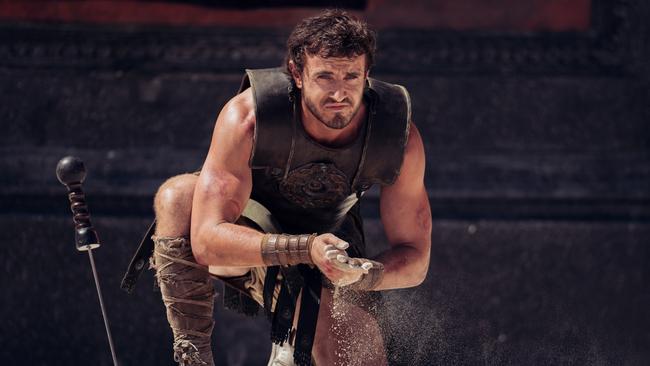
Everyone finds their own unique source of fitness motivation: half-marathons, yoga contortions, wedding slim-downs. Me? I’m motivated by a 28-year-old actor in a leather skirt. I want to be Paul Mescal in Gladiator II.
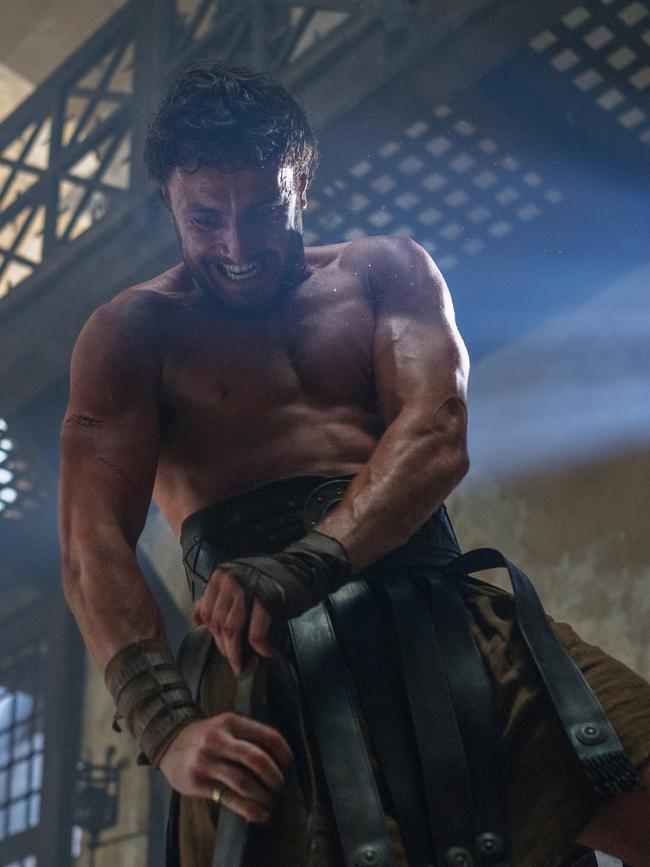
He is, admittedly, less than half my age, one of the most talented stars of his generation and an endlessly charming, global object of lust, but I’m happy to forgo all that – I just want the beefy warrior body he’s built himself for the role of Lucius.
What he’s achieved for Ridley Scott’s long-awaited sequel, released next week, is fascinating for two reasons. First, Mescal is a relatable, regular 180cm-tall guy and a serious actor of huge depth – he’s not a former boxer, wrestler or towering MMA fighter who has hit the big screen with muscles already in place. Second, the body he has created is a believable athletic physique you can actually imagine doing battle in the Colosseum. I loved all of Arnie Schwarzenegger’s 1980s action movies, but it was impossible to picture him in the field without having to stop every 10 minutes for an eggwhite omelette and a bronze body spray.
“I just wanted to be big and strong and look like somebody who can cause a bit of damage when shit hits the fan,” Mescal told Vanity Fair this year. He succeeded – putting on 8.2kg of pure muscle and earning the nickname “Brick Wall Paul” from his (almost as ripped) co-star, Pedro Pascal.
Mescal makes bulking up sound deceptively straightforward: “I ate a lot of chicken and lifted heavy things,” he told Graham Norton recently.
This year I somehow turned 60 and, having always exercised, I was reasonably happy with the battle against decrepitude. I can still belt in a pair of my posh 79cm-waist selvedge jeans, climb the stairs on all the really deep London Underground stations and (mostly) remove the lid from a jar of artisan marmalade.
However, seeing a really substantial muscle gain such as Mescal’s had me yearning to find out what my senior muscles might be able to achieve.
I turned to Simon Waterson, a former naval commando who trains film stars for movies and runs the Intelligent Fitness Skills online program.
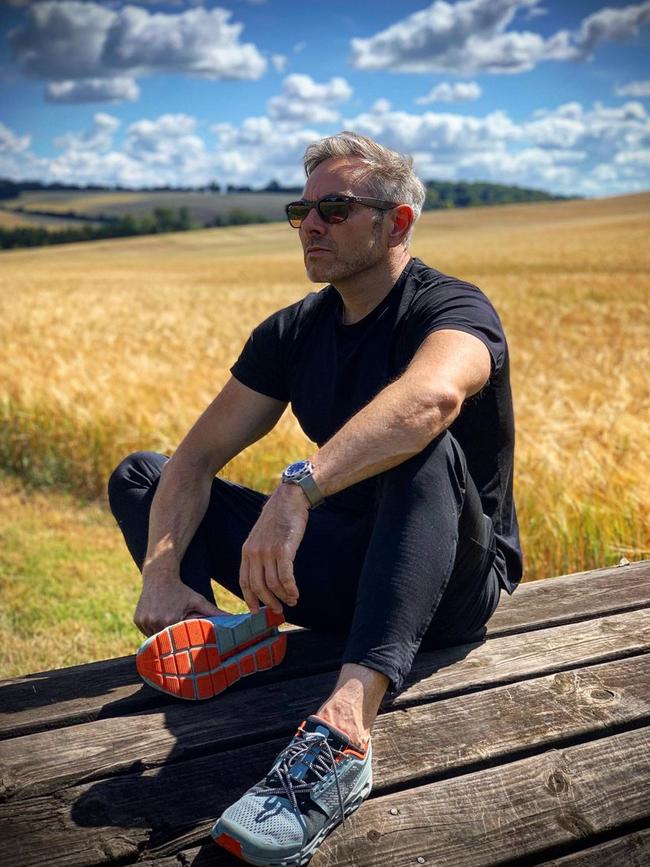
Most notably, he was responsible for Daniel Craig’s ripped pecs as Bond in Casino Royale. The scene where Craig emerges from the water changed action-hero expectations and sentenced subsequent leading men to countless hours of gym time.
How easy is it to build big muscles at 60 and over?
Mescal makes bulking up sound deceptively straightforward: “I ate a lot of chicken and lifted heavy things,” he told Graham Norton recently. Yet when Mescal was born, I already had a mortgage and a tendency to lower back pain. This is the big question that hangs over Operation Gladiator: can I really gain muscle bulk at 60?
Jonathan Folland, professor of neuromuscular performance at Loughborough University, says – without a moment’s hesitation – yes, later-life bulking is entirely possible.
“You definitely can build muscle at 60. There are studies that show people in their 90s can get stronger and bigger as well, using fairly standard resistance training techniques – sets of 10-12 repetitions (which keeps the muscle working for sufficient time to stimulate growth). Oddly, there is very little evidence the process is slower either.”
Mescal had four or five months to prepare his body for the film, with time and every field of relevant expertise available to him. But what about someone a little older with responsibilities, the bins to take out, the car to be registered? Where would Waterson start with someone like me?
“An older guy should never start by thinking what he wants to get back to, never go backward. Don’t think, ‘I wish I was as fit as I was when I was 35’. Let that go, wipe the slate clean, and think forward. Think, ‘I’m going to be the fittest 50-, 60-, 70-year-old’.”
He says banish the fear that can haunt the older person starting a fitness project by embracing the tests now available. “Visit the doctor, get blood tests. You can buy ECGs and physio screenings. Knowledge is power.”
Already being a runner and regular gym-goer, I was quietly confident I’d be robust enough for the program, but if you’re coming to this cold, definitely have yourself looked over.
Serious efforts to bulk up can show within four to six weeks, Waterson adds, but thinking in terms of months is probably more realistic – the factors influencing this include your genetics, how much you’ve previously trained, and your hormones. Some people just wander past a gym and develop huge arms; others find it far harder.
Following his guidance will also bring obvious health benefits, regardless. We will lose 40-50 per cent of our muscle bulk over a lifetime if we don’t maintain it, so hypertrophy (gaining muscle mass) is critical to mitigating this and building strength as we age. But mainly I was just after the look, obviously.
Battle ropes and farmer’s lifts will power up muscles fast
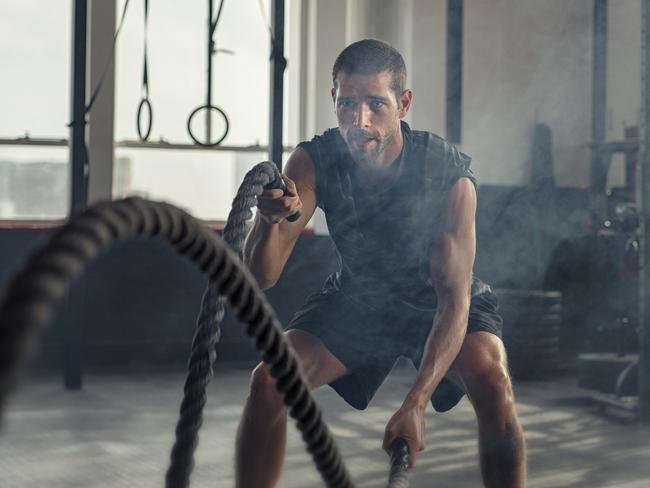
Mescal’s training program focused on fight choreography as much as lifting weights, he said, to make sure he didn’t “end up looking more like an underwear model than a warrior”.
Waterson agrees: the route to a body that looks capable, not merely insanely muscular, is to undertake compound exercises that engage multiple parts of the body at once and require some element of athleticism.
“A gladiator would have used stones, heavy swords, worn armour and shields,” he says. “For Prince of Persia, I had Jake Gyllenhaal running along the horse tracks of Hyde Park in a weighted jacket – the weighted jacket standing in for the armour, the sandy paths for the desert locations.”
In the real world, he tells me, “you need to do multiple different exercises, using the body in different ways. Avoid being one-dimensional: go for farmer’s lifts (walking with a load in each arm), battle ropes (waving a very thick, heavy rope), and standing on unstable surfaces like a Bosu (like a beach ball cut in half). Training in a more athletic way gives you a more athletic physique.”
This is a quite different approach to bulking up using the machines in the gym, where you sit in a fixed position and the only muscle worked is the one you are targeting. It’s a perfectly reasonable way to increase size but the bonus that comes with this kind of training is functional strength, vital as we age. When not wielding a trident, we want to be able to put the shopping in the back of the car without injury.
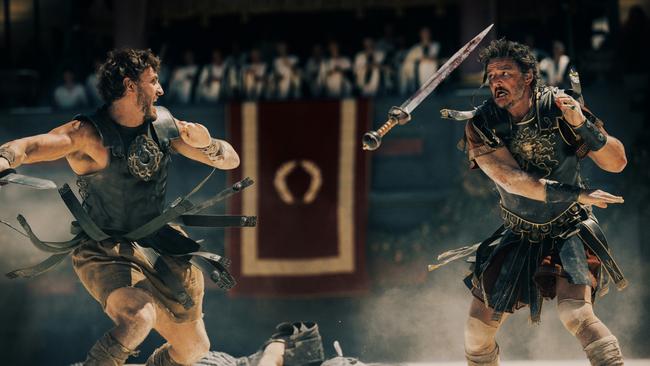
I usually do very casual sessions in the gym two or three times a week, much of which is spent doing cardio or conventionally executed strength moves. Waterson suggests committing to three serious resistance sessions and replacing my usual routine of legs, chest, back, shoulders and arms with compound exercises.
I usually battle through a 22kg dumbbell shoulder press fiasco – Waterson’s approach is about good form, varied movements and weights I can lift properly, which in my case takes me down to 10-12kg shoulder raises and 12 good, slow reps.
A weight I can lift 15 or 20 times will still build muscle, he explains, but present far less of an injury risk than one that leaves me straining from the start.
This addresses my favourite self-sabotage technique: my disappointingly male ego will have me looking across in the gym at a man decades younger and a foot taller, and attempting to match his weight. The need to impress someone who didn’t even know I existed has cost me weeks of injury in the past.
Following Waterson’s instructions, I start performing sets on the wobbly Bosu. If you haven’t tried this, it’s a slightly circus-skills affair. The soft, rubbery half-ball is on the ground, and you balance on top. Holding two 10kg dumbbells, I descend into a squat, then up into a biceps curl, then raise my arms into a shoulder press. It’s a completely different experience from conventional lifting; I can feel my core, my feet, my ankles, just about everything battling to stop me from rolling on to the floor of the gym. Even a light weight feels exhausting, and I’m hopeful my 60-year-old arms are growing.
Try not to plateau, increase your fitness goals as you go
After the six-week or seven-week mark, the body naturally adapts to the pressure, Waterson says. This is when initial strength and aesthetic gains can plateau – so this is when the real meat of my gladiator workout begins.
Waterson recommends some kind of exercise session seven days a week, with resistance training forming at least three of those days, and the weather dictating the essential variety needed for the rest: “If the weather is bad, do a heavy weights session indoors; if it improves, head outside for conditioning or endurance strength training,” he says.
The weights then chunk up to a level where I can only do 10-15 repetitions, truly working my muscles, with the final few reps feeling like a genuine struggle.
To maximise muscle growth further, Waterson recommends slowing down my reps – counting to three on both phases of a lift and throwing in an isometric hold at the end of a set, basically working the muscles without moving.
Training with real intent and squeezing out the last available effort feels a far cry from my habitual slightly drifty sessions. Whereas my goal is usually to emerge feeling mildly smug, now I’m working for size and it feels significantly more purposeful. As Waterson predicts, some days feel stronger than others – take advantage of those when they happen, he advises, and never feel guilty about less productive sessions.
On top of exercise, you need to eat a lot of protein to build muscle
Muscle growth and repair after a lifting session are driven by protein. Mescal’s chicken-heavy regimen is a hint, but how much do I actually need? Waterson recommends two grams of protein per kilo of body weight per day. For someone like me who weighs 68kg, I’m aiming for 136g a day. That’s a lot of protein – the equivalent of four large chicken breasts a day, to use Mescal metrics. Waterson advises: “To put on more muscle you will need to eat more protein than you usually do, but make sure you’re covering all the nutritional bases,” he says.
“So have a balanced set of meals (including healthy fats and carbohydrates) and just slide specific nutrition in between. If you want to have 30g of protein per meal and five meals a day, protein shakes make it easy.” If you’re not a fan of shakes, Waterson reminds me that all the protein adds up – every breakfast egg, yoghurt, packet of nuts, even the milk in my coffee. With three hefty meals plus lean, protein-rich nibbles, I’m left with less of my usual bread and cinnamon bun craving, and far greater energy levels – I’m starting to think my whole diet has been unbalanced all along.
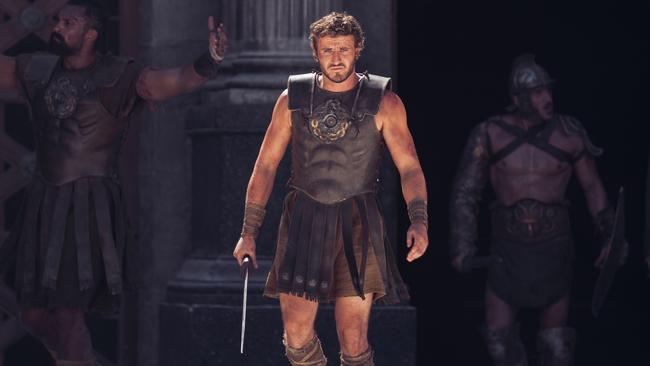
How I learned to think like a gladiator
My quest for a games-worthy body took me to historian Alexander Mariotti, a script adviser on the film. The preparation for a fight at gladiator school was rather like Mescal’s preparation for his role, he says. These were valued athletes who needed to be transformed by experts for a specific moment. Their training weeks were divided in much the same way, and the process would build to fight day just as a leading man would build to a scene.
This is central to Waterson’s process, and it’s an approach I’m definitely going to keep up. “It’s called periodisation. You put a big X on your calendar for, say, a shirt-off scene, and you work back from there.” The final two weeks before the big moment is key. “That’s when you will feel most motivated. It’s human nature. So that’s when you might want to up the intensity and possibly be more strict with yourself.”
My big scene will never come and I have no stunts to rehearse, but I have definitely seen improvements. There hasn’t been a tape measure but there has been considerable mirror time and I’m convinced there’s more beef. At 60, I’ve learnt to grasp motivation in whatever bizarre and ludicrous form it takes. Seeing an actor we know from Normal People become a convincing Roman warrior in a matter of months is exciting. I say to any older people out there who are similarly inspired, carpe diem! (Once you’ve completed a few basic health checks.) Obviously, your newly built muscle won’t really show if you’re carrying too much weight. For anyone who wants to undertake a fat-loss phase to shed any unwanted padding, do that after you’ve built the muscle, Waterson says.
“Most people will require about 2000-2500 calories a day if we assume a body weight of around 80-90kg,” Waterson says. “If you want to drop some fat, you have to be in a calorie deficit of about 500 calories a day. I do this by increasing movement to burn an extra 250 and decreasing food intake by 250. The 500-calorie deficit equates to losing a pound of fat a week – use that as a rough gauge.”
I must manage expectations here – you cannot choose how your body will burn fat. If there’s side sag or superfluous stomach, this will be burnt as your calorie deficit kicks in but not necessarily in the order you would have wanted. “Nine times out of 10, your body will burn the fat you most want to lose after it’s lost it everywhere else first.”
Beef up your body in six weeks: the Hollywood trainer’s exercises
Simon Waterson’s muscle-building moves – do these three times a week:
Push-ups on dumbbells to beef up your chest and arms
Place your palms on the dumbbells and assume a plank position. Use a weight that’s heavy enough to be stable – about 10kg. Engage your core and press down and back up into a push-up. The dumbbells place your wrists in a safer, more comfortable position than a conventional push-up. By adjusting the dumbbell position, you can vary the muscle engagement: closer together works the triceps; placing them further apart engages the shoulders. Standing the dumbbells vertically provides a deeper push-up.
15-20 reps – steady motion, being careful to control the downward phase.
Split squat into single-arm press to tighten your glutes and quads
Start with your feet shoulder-width apart. Squat down as if sitting on a chair while lifting the dumbbells in front of you, keeping your arms straight. Stand back up and lower the weights at an even pace throughout. Use a weight heavy enough to allow slow, deliberate movements.
15-20 reps
Forward raise with a squat to boost your shoulder
Start by kneeling on one knee, holding a dumbbell in one hand on the same side as your raised knee. Bring your back leg forward to reach a standing position while lifting the dumbbell straight into the air, then return to the starting position. Repeat on the other side. Ensure your elbow aligns with the knee and doesn’t swing outward.
15-20 reps on each side, holding a weight that allows slow, deliberate movements.



To join the conversation, please log in. Don't have an account? Register
Join the conversation, you are commenting as Logout